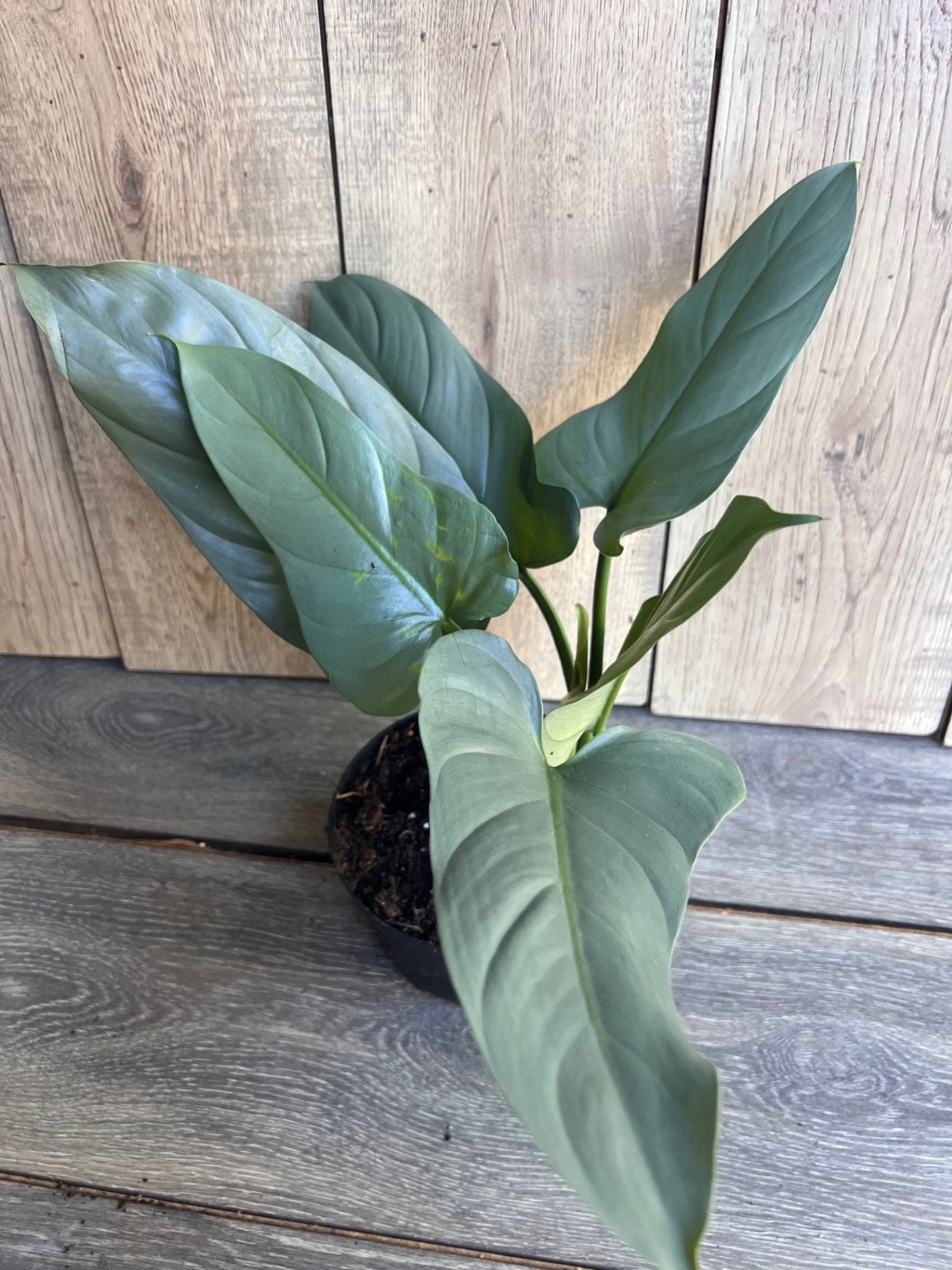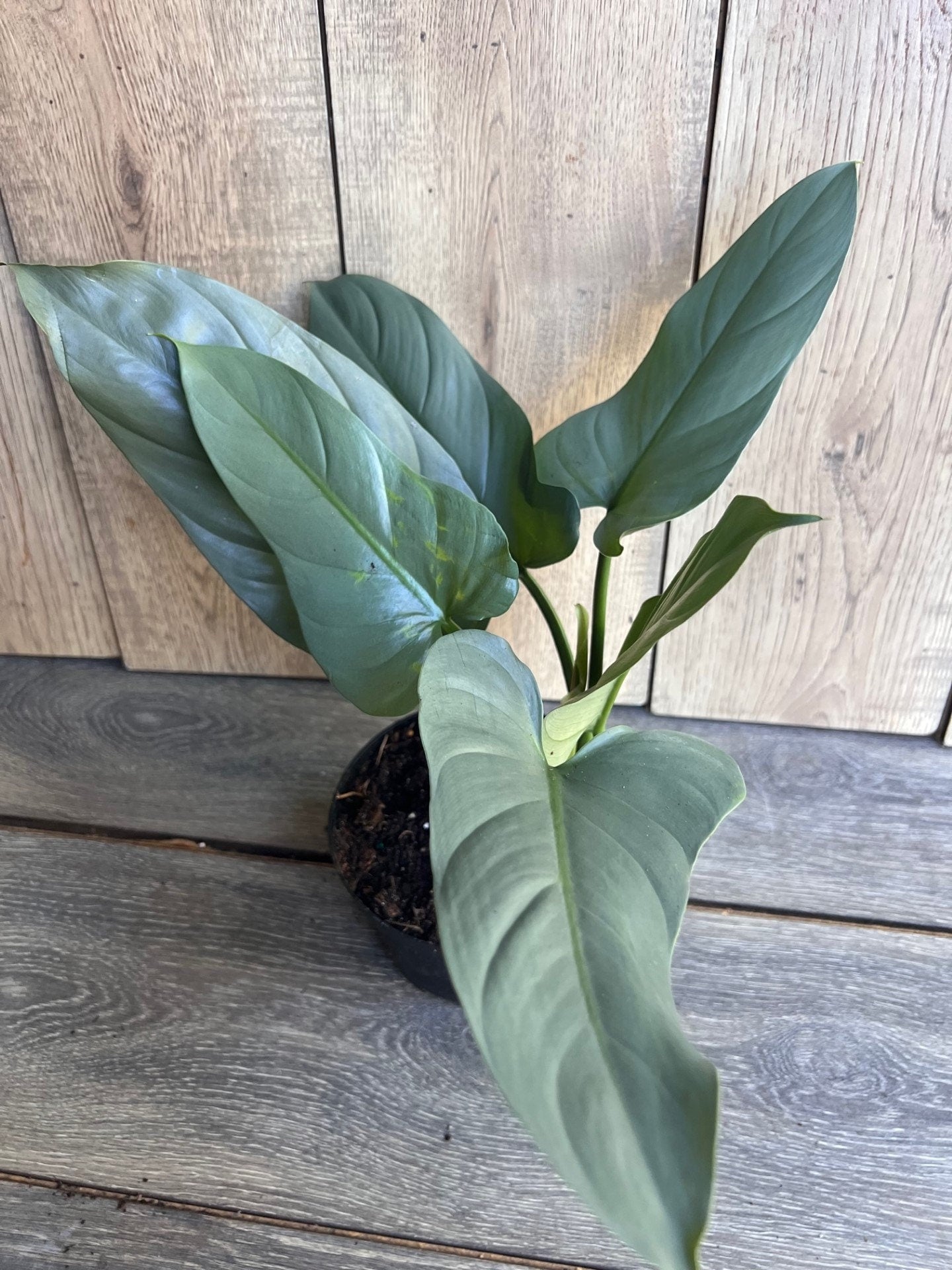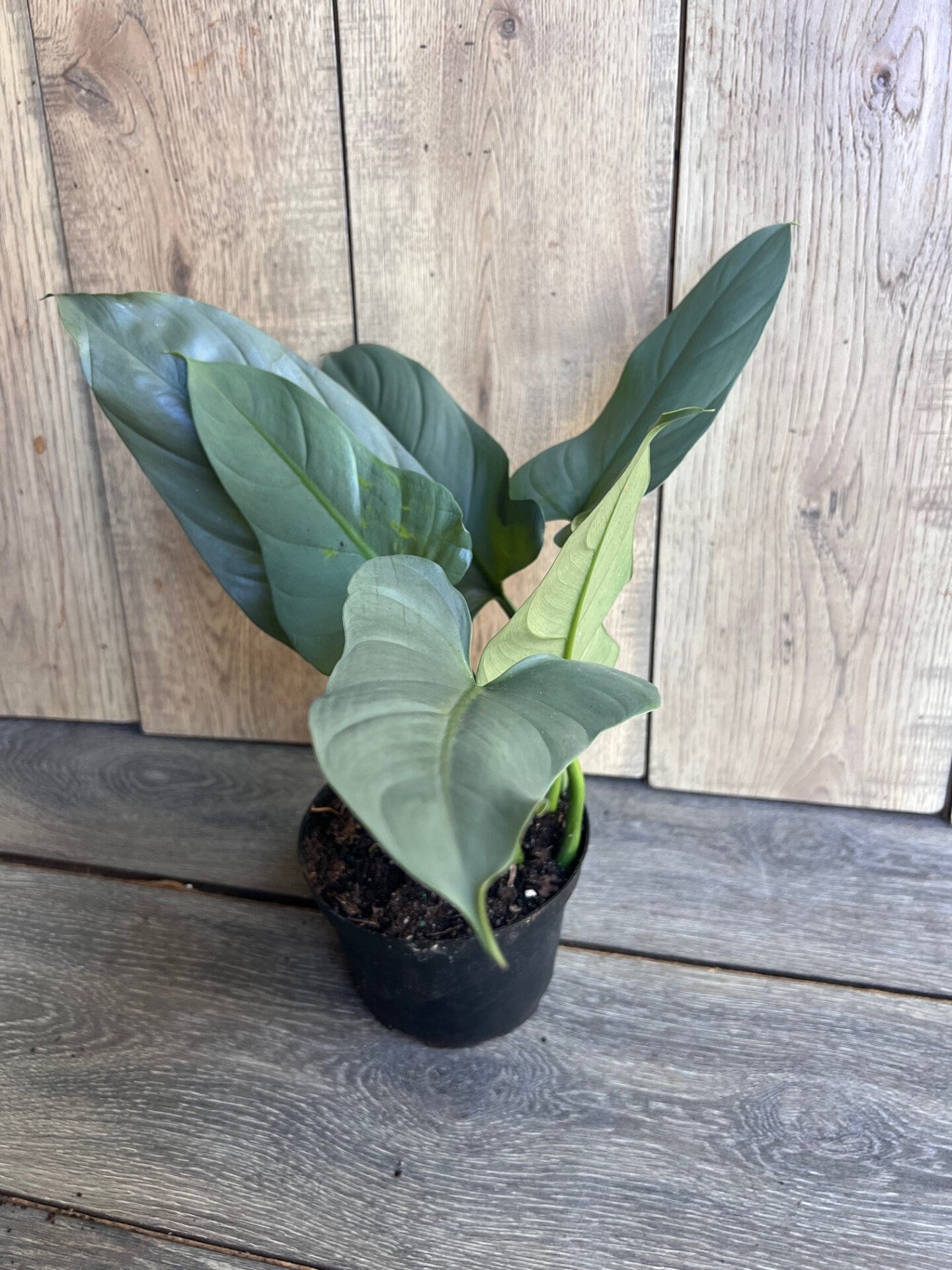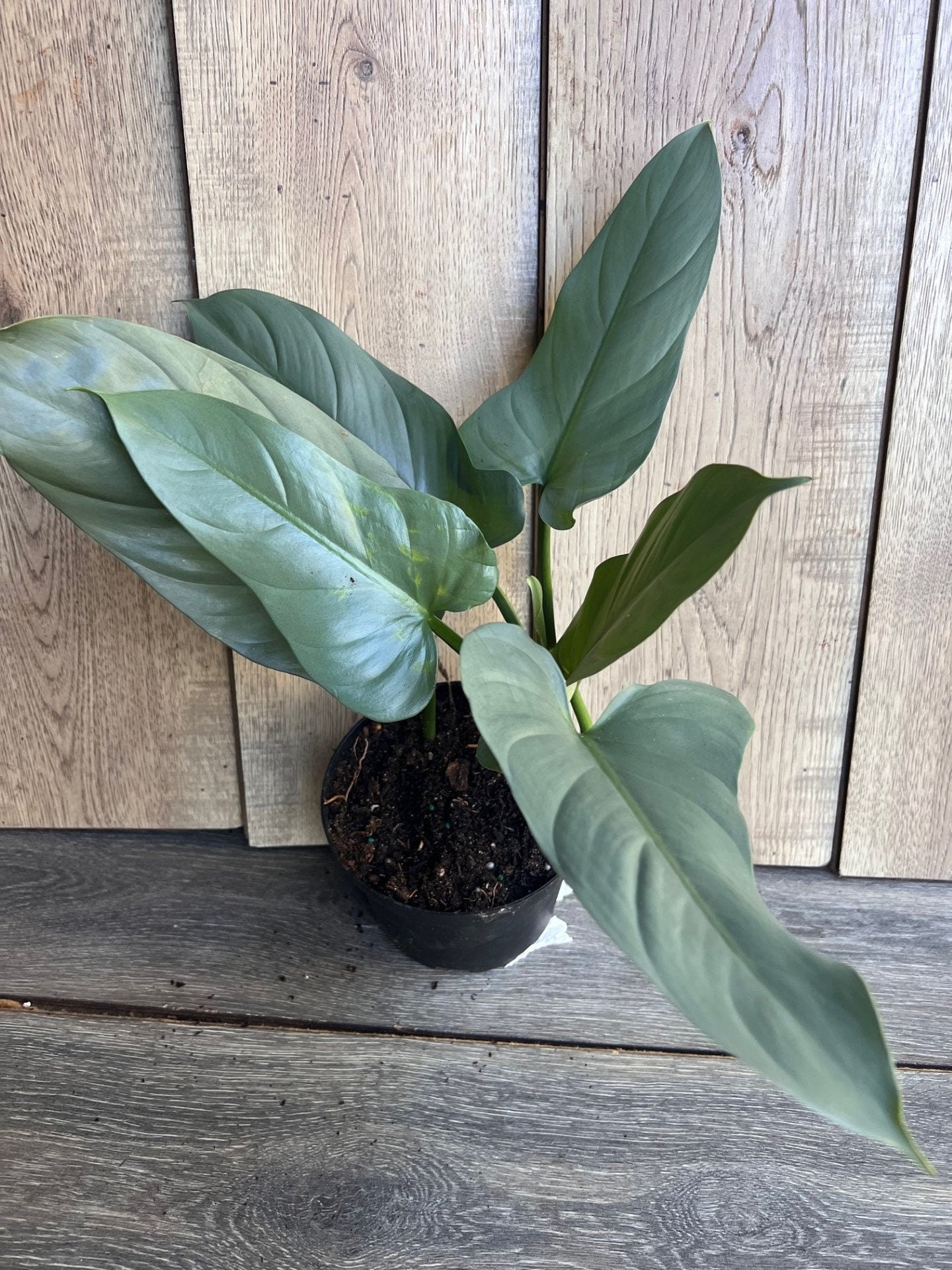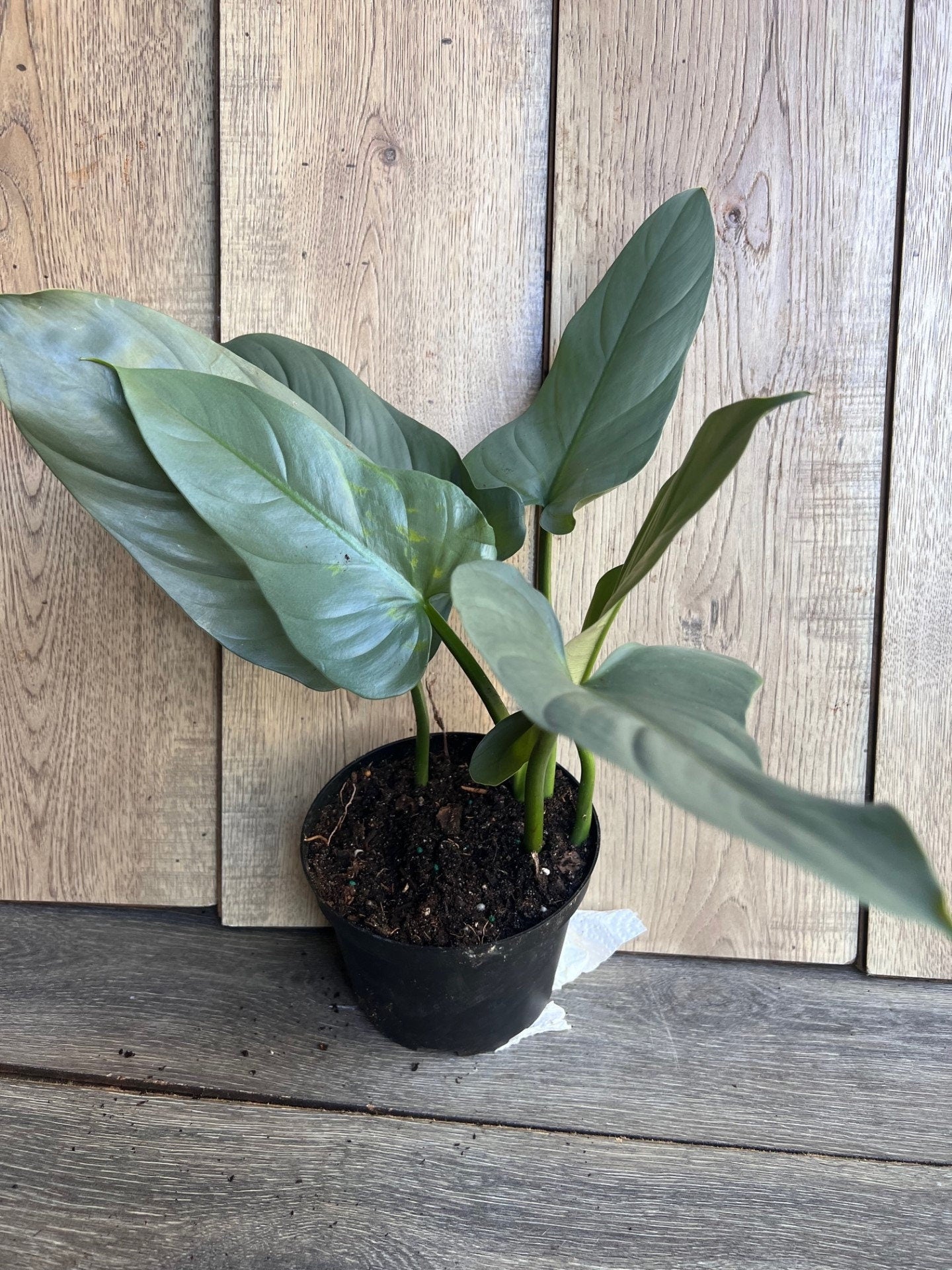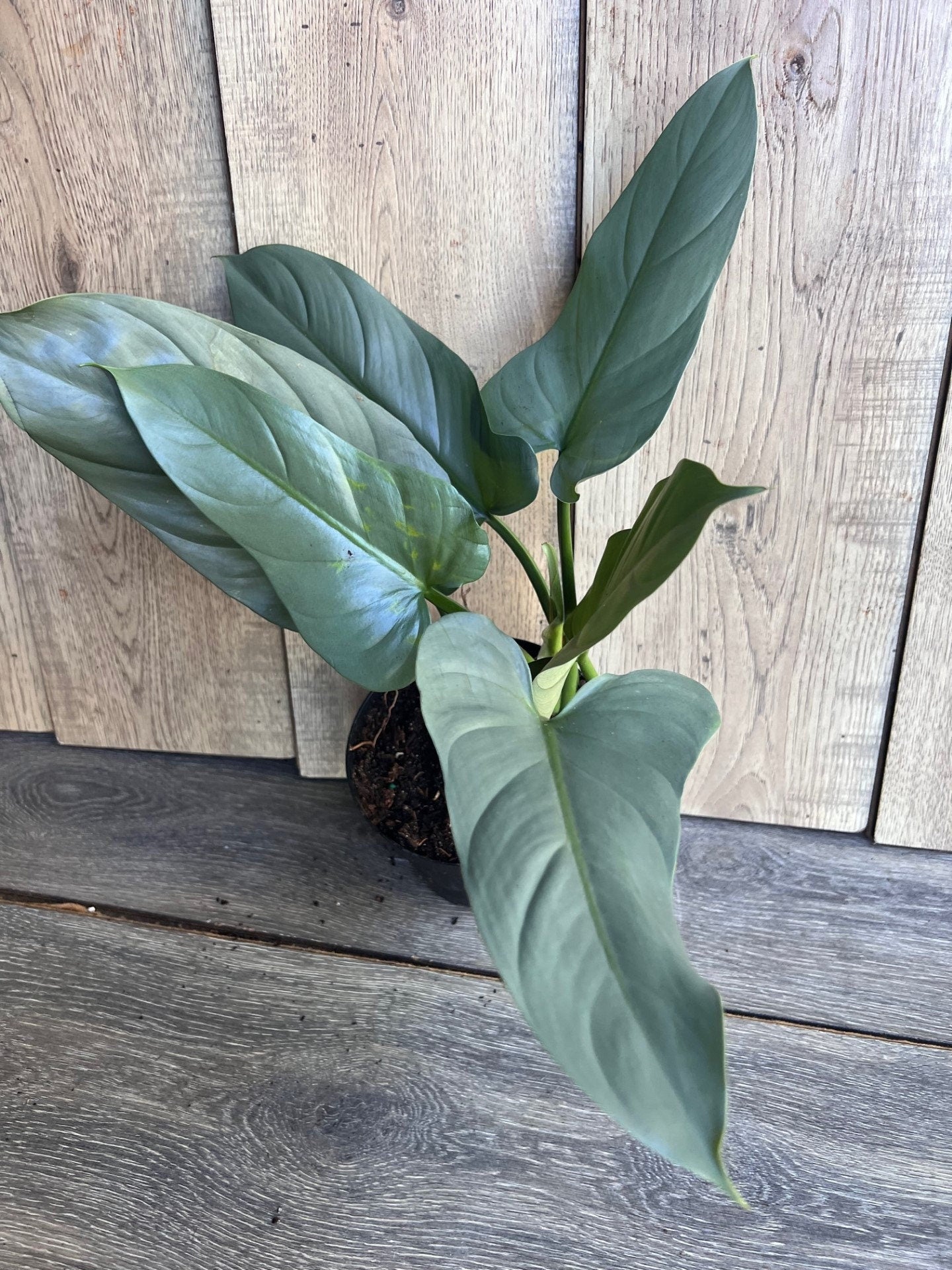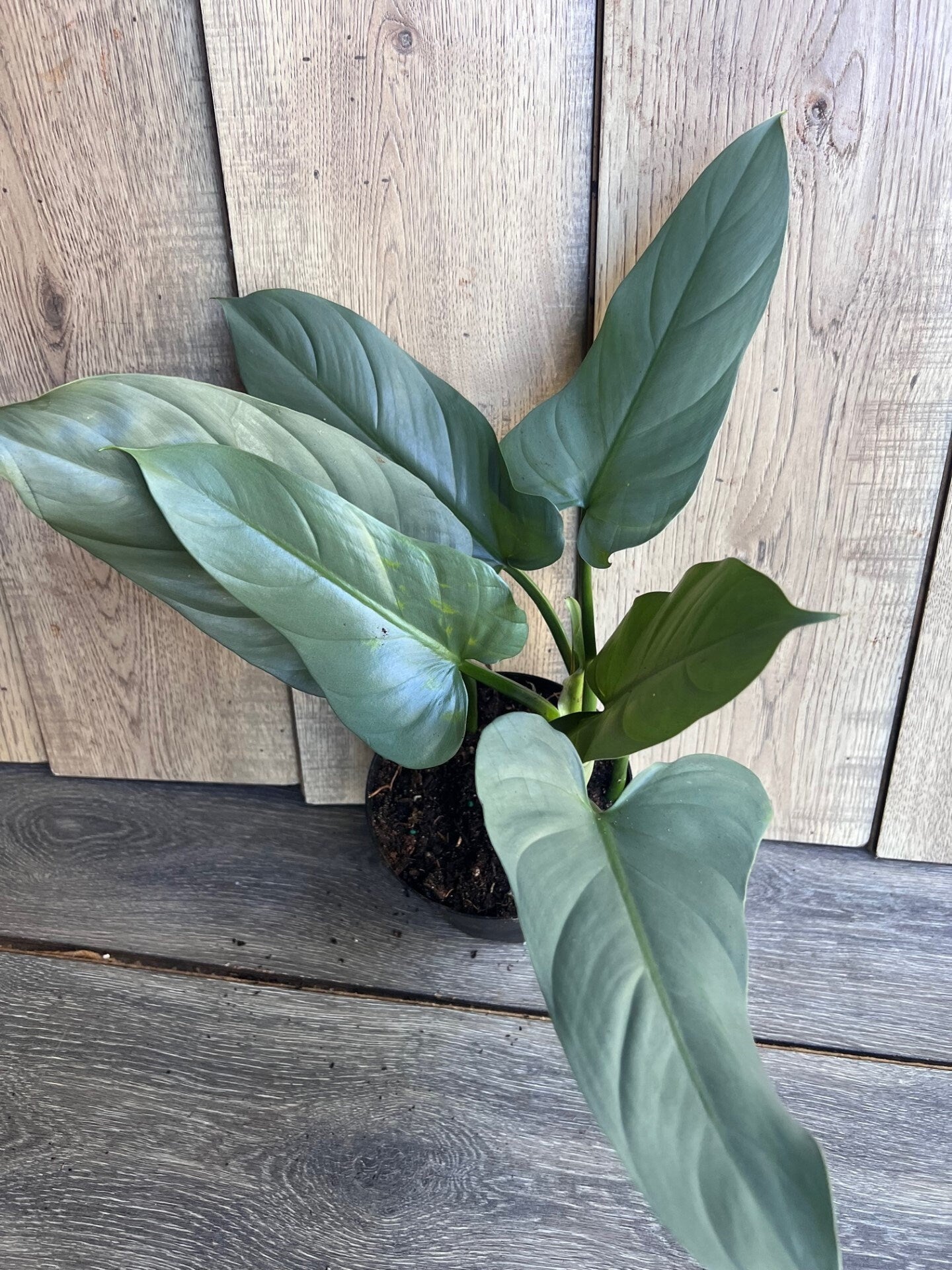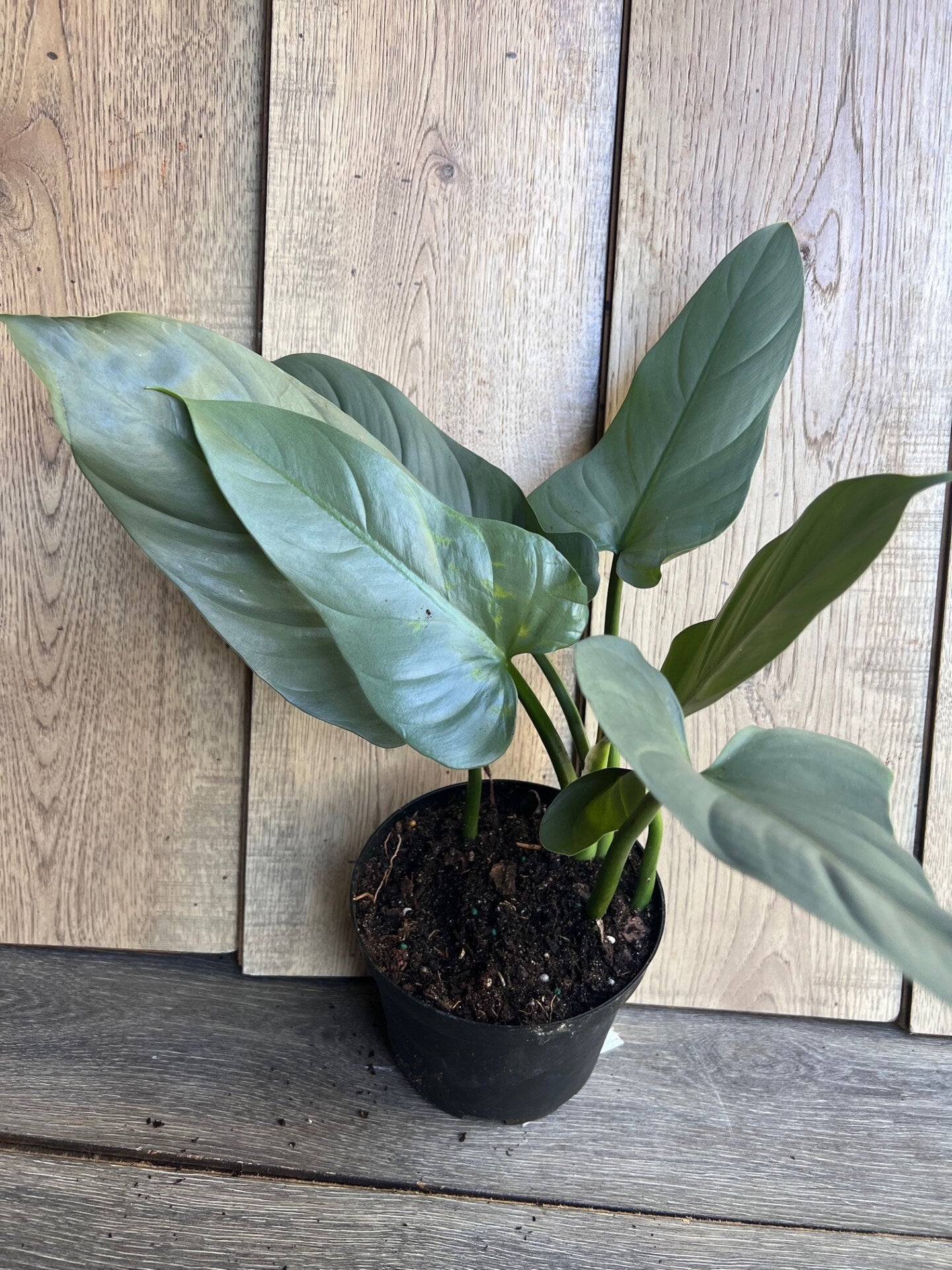Philodendron SIlver Swords, Philodendron Hastatum in 6" pot
Philodendron SIlver Swords, Philodendron Hastatum in 6" pot
Couldn't load pickup availability
Note: you will receive one philodendron Silver sword in 6" pot similar to the pictures
Philodendron 'Silver Sword' (also known as Philodendron angustisectum) is a highly sought-after species prized for its stunning, silvery-green foliage. Native to the rainforests of South America, this plant is known for its unique metallic sheen, which gives it the "silver" look, especially when the leaves are young. The plant’s elongated, lance-shaped leaves have a silvery tint that becomes more pronounced with age, making it a favorite among plant enthusiasts. It is a vining or climbing plant that can grow quite large if given the right support, but it’s also perfect for hanging baskets or cascading down shelves.
-
Light
- Philodendron 'Silver Sword' thrives in bright, indirect light. This light will help maintain the silvery sheen on its leaves. If the plant is placed in too much direct sunlight, the leaves may scorch or lose their characteristic silver color. In lower light conditions, the plant may become leggy and lose its striking appearance. It’s ideal to place it near a bright window with filtered light or slightly further from direct sun.
-
Watering
- Water Philodendron 'Silver Sword' when the top 1–2 inches of soil feel dry. This plant prefers slightly moist soil but doesn’t like to sit in water, which can lead to root rot. Ensure that the pot has good drainage to avoid waterlogging the roots. During the winter months, when the plant’s growth slows down, you can reduce watering, but avoid letting the soil dry out completely.
-
Soil
- A well-draining, airy potting mix is essential for this plant. A good mix might include perlite, coconut coir, or orchid bark to improve drainage and air circulation around the roots. A standard houseplant mix with added perlite or sand will work well. The soil should be slightly acidic to neutral (pH 5.5-7), which suits Philodendron 'Silver Sword' perfectly.
-
Temperature
- Philodendron 'Silver Sword' prefers warm temperatures between 65°F and 80°F (18°C–27°C). Keep it away from drafts, air conditioners, and cold windows, as the plant is sensitive to temperatures below 50°F (10°C). Cold stress can cause the leaves to drop or develop brown spots.
-
Humidity
- Being native to the tropical regions of South America, Philodendron 'Silver Sword' thrives in high humidity (50% or higher). The more humidity you can provide, the better the plant will perform, producing large, vibrant leaves. If you live in a dry area, consider using a humidifier, placing the plant on a humidity tray, or misting the leaves regularly to raise the humidity around the plant.
-
Fertilizing
- Fertilize your Silver Sword every 4–6 weeks during the growing season (spring and summer) with a balanced liquid fertilizer. You can dilute the fertilizer to half strength to avoid over-fertilizing. Reduce fertilizing in the fall and winter when the plant's growth slows down, as the plant won't need as much food during its dormant phase.
-
Pruning
- Philodendron 'Silver Sword' doesn’t require regular pruning, but you can trim back any leggy stems to maintain a tidy appearance. If you want to encourage bushier growth, you can prune back the main stem and allow side shoots to develop.
- This plant can be propagated through stem cuttings with at least one node (the small bump where roots form). You can root cuttings in water or soil, and once the roots have developed, they can be potted into fresh soil.
-
Repotting
- Repot your Philodendron 'Silver Sword' every 1–2 years or when it outgrows its pot. Choose a new pot that is 1–2 inches larger in diameter than the current pot. Repotting is best done during the spring or early summer, when the plant is actively growing. Make sure to use fresh, well-draining soil when repotting to promote healthy root development.
-
Pests and Diseases
- Keep an eye out for common houseplant pests such as mealybugs, aphids, spider mites, and scale. These can typically be treated with neem oil, insecticidal soap, or rubbing alcohol. Regularly inspect the undersides of the leaves for pests.
- Overwatering can cause root rot, so make sure the plant has proper drainage and avoid letting the soil stay soggy for long periods.
Share
